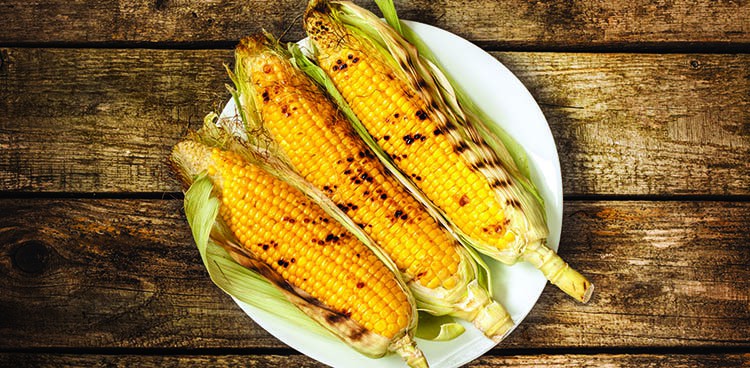
Not all corn is created equal. The butter-slathered ears at your uncle’s barbecue are not quite the same as what goes into animal feed, high fructose corn syrup, ethanol, and other processed products. While the former—called sweet corn—is young, bright yellow, juicy, and ready to eat raw, the latter—known as field corn—is left to fully mature on the stalk, resulting in hard, extremely starchy kernels (the crop is dried to prevent spoilage).
Compared to its older relative, sweet corn is a mere sliver of the domestic crop—about one percent, to be exact. Though maize, the parent plant of all corn varieties, originated in North America, scientists aren’t quite sure how the plant evolved to its current iteration (it doesn’t grow anywhere in the wild).
The grain is still super-popular on its home turf: The United States is currently the top corn producer, exporter, and consumer, growing 13.6 million bushels and utilizing 11.8 million bushels during the 2015–16 season.
Sweet corn is in season from July to October, depending on where you are in the country. Preparations are myriad, from cooked cobs topped with butter (or melty cheese), salt, and pepper to corn pudding, chowder, and salad.
When shopping for sweet corn, go to the source if possible—a farmers’ market or even the farm itself is best. Fresher corn means higher sugar content, which is good news for your taste buds. (Don’t worry, health nuts; it also packs fiber and heaps of lutein and zeaxanthin, two antioxidants.) And whatever you do, don’t shuck it at the store—the husk helps retain moisture. There are a few ways to cook corn.
First, you can opt not to cook it at all—trim raw corn off the cob and toss the milky kernels into cool salads or warm pasta. Or you can give ears the traditional bath in boiling water (the simplest way to cook a big batch at once). To add charred flavor, grill it. Finally, if you’re prepping only a few ears of corn, use the microwave (yes, really). Not only does the method produce tender, juicy ears, the steam generated between the kernels and the husk makes removing pesky corn silk a breeze.
One thing to note: If GMOs are a concern, seek out organic ears. While sweet corn was nearly guaranteed GMO-free until 2012 (most of the science went toward lucrative field corn), genetically modified versions are now available at market.
Salted Sweet Corn Ice Cream
Ingredients
- 4 ears sweet corn shucked
- 2 cups whole milk
- 2 cups heavy cream
- ¾ cup granulated sugar divided
- 9 egg yolks
- 1 teaspoon coarse sea salt
Instructions
- Slice kernels off corncobs and add to the bowl of a food processor or blender. Add milk and process until pureed. Add puree and cream to a large saucepan over high heat. Break cobs into large pieces and add to the saucepan with ½ cup sugar. Once mixture boils, stir and remove from heat. Cover pan and let sit 1 hour.
- Discard cobs and bring mixture to a simmer over medium heat. Meanwhile, whisk egg yolks and remaining ¼ cup sugar together in a medium bowl. Add 1 cup of the hot liquid to the yolk mixture and whisk until combined. Add yolk mixture to the hot liquid, whisking until combined. Reduce heat to medium-low and cook until custard thickens and coats the back of a spoon, about 10 minutes.
- Strain custard through a fine-mesh sieve and discard solids. Let custard cool to room temperature. Chill in the refrigerator for at least 4 hours. Freeze in an ice cream maker according to manufacturer’s instructions. About halfway through churning, add salt. Finish churning, then transfer to a lidded container, cover, and freeze for at least 2 hours. Soften at room temperature for at least 5 minutes before serving.



